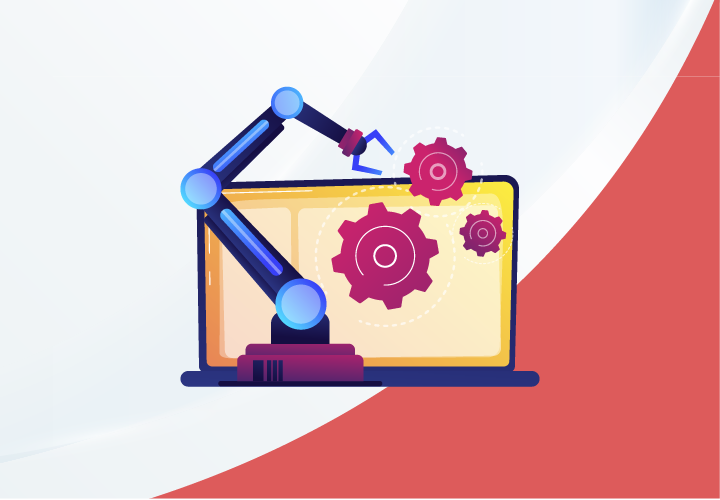Automation and Mechatronics Internship Program
in MECHANICALAbout this course
Automation & Mechatronics Internship Program: 6-Week Structured Learning and Experience
Introduction
Automation & Mechatronics is the interdisciplinary synergy of mechanical, electrical, electronics, and computer systems. This internship program offers participants a solid foundation in sensors, actuators, PLCs, HMI systems, microcontrollers, industrial robotics, and automation logic. Ideal for engineering students and aspiring automation professionals, this hands-on curriculum includes simulation, design tasks, research, and theoretical exploration. The final project involves designing a theoretical Line Following Robot using automation principles.
Program Highlights
Week 1: Fundamentals of Mechatronics & HR Integration
· Introduction to HR Management in Tech Organizations
o Task: Research and write a report on the role of HR in organizational success.
o Outcome: A 500-word report analyzing HR's role with real-world examples.
· Basics of Mechatronic Systems
o Task: Study and summarize components of a basic mechatronic system (sensors, actuators, microcontrollers).
o Outcome: A 300-word summary with labeled diagrams.
· Introduction to Automation Types
o Task: Research fixed, programmable, and flexible automation.
o Outcome: A comparison chart of types, features, advantages, and examples.
Week 2: Sensors and Actuators in Automation
· Sensor Technology Overview
o Task: Create a presentation on various types of sensors used in automation systems.
o Outcome: A 6-slide presentation on sensor types, principles, and applications.
· Actuators and Their Applications
o Task: Write a report on pneumatic, hydraulic, and electric actuators.
o Outcome: A 400-word report with real-world examples.
· Microcontroller Basics
o Task: Study a microcontroller (Arduino or PIC) and explain its architecture and pin configuration.
o Outcome: A 500-word document with diagrams and pinout explanation.
Week 3: Control Systems & Industrial Automation Tools
· Introduction to PLCs
o Task: Learn about PLCs and write a brief guide on their use in automation.
o Outcome: A 2-page guide with block diagram and applications.
· Basic Circuit Design
o Task: Design a simple control circuit using sensors and actuators.
o Outcome: Circuit diagram (hand-drawn or software-based) with explanation.
· Overview of Industrial Robots
o Task: Research robot types and their industrial applications.
o Outcome: A 1-page document with classifications and examples.
Week 4: Human-Machine Interfaces and Programming Logic
· Human-Machine Interface (HMI) Design
o Task: Study the role of HMIs in automation systems and design a layout.
o Outcome: A mock HMI layout (PowerPoint, Figma, etc.) with annotations.
· Basic Programming Logic
o Task: Write simple motor control logic using ladder logic or flowchart.
o Outcome: A logic diagram with explanation.
· SCADA Systems Introduction
o Task: Research how SCADA works in industrial automation.
o Outcome: A 400-word summary with a working flow diagram.
Week 5: Advanced Automation Concepts
· PID Control Basics
o Task: Learn and explain the concept of PID control.
o Outcome: A 500-word explanation with real-life application.
· Mechatronics in Automotive Systems
o Task: Research automotive mechatronic systems.
o Outcome: A report with 3 examples (e.g., ABS, cruise control).
· Safety in Automation
o Task: Study safety standards in automation (e.g., ISO 13849).
o Outcome: A checklist or infographic summarizing automation safety practices.
Week 6: Integration, Smart Systems, and Capstone Project
· Smart Sensors & IoT in Automation
o Task: Research the role of IoT and smart sensors in automation.
o Outcome: A 1-page summary with a use-case example.
· System Integration Basics
o Task: Learn how to integrate mechanical, electrical, and control components.
o Outcome: A block diagram showing system integration.
· Final Project: Line Following Robot (Concept Design)
o Task: Design a theoretical line-following robot using sensors and microcontroller.
o Outcome: A 2-page concept note with components, logic flow, and expected challenges.
Bonus Modules & Career Readiness
· Energy Efficiency in Mechatronics
o Task: Research energy-saving methods in automation.
o Outcome: A 300-word report on techniques and benefits.
· Career Opportunities in Automation & Mechatronics
o Task: Explore top roles and industries for automation engineers.
o Outcome: A 1-page guide with job roles, required skills, and demand overview.
Expected Outcomes
By the end of this internship, participants will:
· Understand core components of mechatronic systems.
· Analyze sensor and actuator applications in automation.
· Develop basic circuits and logic diagrams.
· Get familiar with microcontrollers and PLC usage.
· Design HMI interfaces and understand SCADA/PID principles.
· Explore safety, energy efficiency, and career pathways.
· Complete a Line Following Robot theoretical design project.
Requirements
Laptop
Internet Connection
Comments (0)
To understand the fundamental role of HR in organizational success by exploring key HR functions and their impact on overall business performance.
To explore and understand the core components of a mechatronic system, their individual roles, and how they work together in automation.
To gain knowledge of different types of automation systems and analyze their features and use cases in modern industries.
To understand the various types of sensors used in automation and their working principles, applications, and importance in system control.
To explore different types of actuators and understand their functions and real-world uses in automated systems.
To understand the structure and functionality of microcontrollers, and how they are used in automation systems.
To learn the basics of Programmable Logic Controllers (PLCs), their architecture, and how they are used for industrial automation tasks.
To develop basic skills in creating control circuits that integrate sensors and actuators for simple automation tasks.
To explore the types of robots used in industrial automation and understand their characteristics, functions, and real-world roles.
To understand the role of HMIs in automation systems and develop a sample design for a machine control interface.
To understand and implement basic control logic used in automation through ladder logic diagrams or flowcharts.
To explore how SCADA systems function in industrial automation and their role in real-time monitoring and control.
To understand the basic theory of Proportional-Integral-Derivative (PID) control and how it is applied in real-world systems.
To explore real-world applications of mechatronic systems in the automotive industry.
To learn about safety protocols, hazard prevention, and international standards in automated work environments.
To explore how smart sensors and Internet of Things (IoT) technologies are enabling intelligent, connected automation systems.
To understand how various components in an automation system (mechanical, electrical, electronic, and software) are integrated to function as a single unit.
To understand the theoretical framework required to design a line-following robot using sensors and a microcontroller.
To identify and understand design strategies that help reduce energy consumption in automation and mechatronic systems.
To help students explore career paths, required skills, and growing industries in the field of automation and mechatronics.









